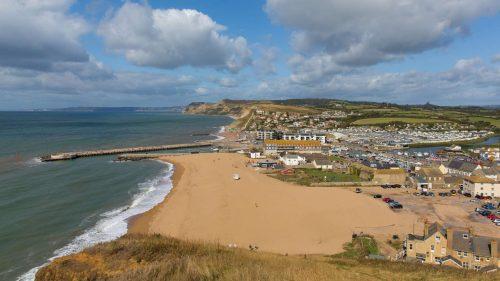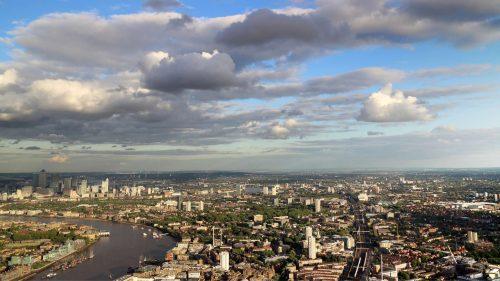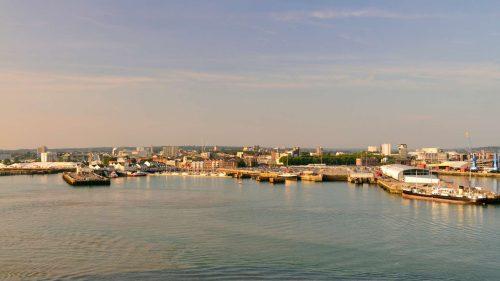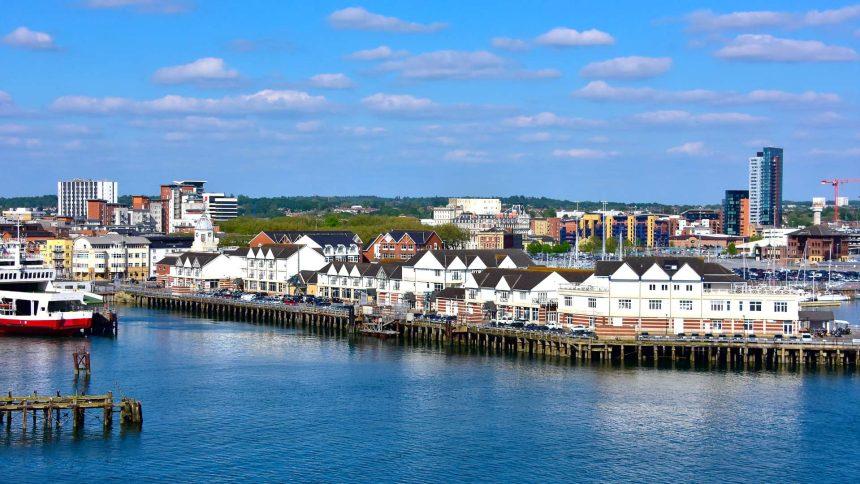|
Getting your Trinity Audio player ready...
|
Is Southampton in the South East or South West of England? This question often sparks debate due to the city’s unique position near the southern coastline.
Known for its bustling port, historical landmarks, and vibrant cultural scene, Southampton holds a prominent place in England’s geographical and economic framework. However, its location, straddling boundaries, and near key regional divisions raise curiosity about its exact regional classification.
While some associate it with the South West’s picturesque charm, others argue it belongs to the South East’s urban and economic powerhouse. What factors contribute to its classification, and how has its geographical significance evolved over time? Let’s explore these aspects to uncover the answer.
What Defines South East and South West England?

The South East and South West regions of England are two distinct areas with unique geographical, cultural, and economic characteristics. These regions are officially defined for administrative purposes, making them vital to understanding the nation’s structure.
South East England is known for its proximity to London and includes counties like Kent, Surrey, and Hampshire. The region is a hub of economic activity, boasting industries such as finance, technology, and tourism. The area also features iconic landmarks like the White Cliffs of Dover and the university city of Oxford.
On the other hand, South West England is celebrated for its picturesque countryside, coastal beauty, and historical significance. This region includes counties such as Devon, Cornwall, and Dorset and is famed for landmarks like Stonehenge and the Jurassic Coast.
Despite their differences, both regions are interconnected through transport networks and contribute significantly to England’s economy and culture.
Where Is Southampton Located?
Southampton is a port city in the ceremonial county of Hampshire, situated on the southern coast of England. It lies approximately 70 miles southwest of London, making it an integral part of southern England’s geography.
Strategically located, Southampton is bordered by the River Test and the River Itchen, with access to the Solent, a crucial maritime channel leading to the Isle of Wight. This positioning has historically made Southampton one of the UK’s most prominent port cities, renowned for its role in trade and the shipping industry.
Its proximity to other key locations, such as Portsmouth (15 miles east) and Bournemouth (30 miles west), further emphasizes its importance as a transport and cultural hub. Southampton is also home to thriving industries, prestigious universities, and cultural landmarks, making it a significant city in its region.
Location:
Is Southampton South East or West?
Southampton is officially part of the South East region of England. This classification is based on the government’s regional mapping system, which places the city within Hampshire, a county widely considered part of the South East.
However, there is often confusion due to Southampton’s geographical location. The city sits near the western edge of the South East region, creating a sense of proximity to the South West.
Its cultural and economic ties, particularly its connection to the maritime industry and neighboring regions, blur the lines further.
The Office for National Statistics (ONS) clearly designates Hampshire, and thus Southampton, as South East. This aligns the city with other South East counties like Surrey, Kent, and West Sussex.
In conclusion, despite its western positioning within Hampshire, Southampton’s official designation is firmly in the South East, according to England’s regional framework.
Historical Context of Southampton’s Regional Classification
Southampton’s classification as part of the South East has evolved over the years due to historical, administrative, and geographical factors.
Historically, Southampton’s strategic location along the southern coast positioned it as a key maritime and trade hub, often aligning it with neighboring South East counties like Surrey, Sussex, and Kent.
In the early administrative divisions, Hampshire, the county Southampton belongs to, was recognized as part of the South East due to its economic ties and geographic proximity to London.
This classification was further solidified in modern regional maps created by the UK government, including those by the Office for National Statistics (ONS).
Key factors influencing its classification include:
- Proximity to London, a defining characteristic of the South East region.
- Economic and trade connections with other South East cities, such as Portsmouth and Brighton.
- Hampshire’s consistent placement within South East England in administrative frameworks.
Despite occasional debates, historical context supports Southampton’s position within the South East, both geographically and administratively.
Economic Contributions of Southampton to the South East

Southampton is a vital economic powerhouse within the South East region of England. Its strategic location as a port city on the Solent positions it as a critical hub for international trade and commerce. The Port of Southampton is among the UK’s busiest, handling goods and serving as a major cruise liner departure point.
The city contributes to several key industries:
- Shipping and Logistics: The port supports global trade, importing and exporting goods across Europe and beyond.
- Advanced Manufacturing: Southampton is home to innovative companies in aerospace, marine technology, and engineering.
- Retail and Tourism: Westquay Shopping Centre and the cruise industry boost the local economy by attracting millions of visitors annually.
- Education and Research: Institutions like the University of Southampton foster innovation, particularly in science and technology sectors.
Southampton’s economy is indispensable not just to the South East, but to the UK as a whole, emphasizing its importance within the region.
Cultural Significance of Southampton in the South East
Southampton’s cultural heritage is deeply rooted in its maritime history and its role as a gateway to the world. The city has long been associated with exploration, trade, and cultural exchange, making it a cornerstone of the South East’s cultural identity.
Key cultural highlights include:
- Maritime Heritage: Southampton’s SeaCity Museum showcases the city’s history as the departure point for the Titanic.
- Arts and Festivals: The Mayflower Theatre, Southampton International Film Festival, and Music in the City events reflect its vibrant arts scene.
- Historic Landmarks: Iconic sites like the Bargate, Tudor House, and medieval walls offer a glimpse into its rich past.
- Modern Influence: Southampton’s diverse population brings global cultural influences, enriching its food, art, and traditions.
The city’s blend of historical and contemporary culture makes it a key contributor to the South East’s identity, attracting visitors and fostering regional pride.
What Is Southampton Famous For?
Southampton is renowned for its maritime heritage, vibrant cultural scene, and economic contributions. The city’s fame extends to various domains, making it a significant destination in the South East of England.
Key aspects Southampton is famous for include:
- Maritime History: Southampton was the departure point for the Titanic, commemorated at the SeaCity Museum. Its port remains one of the busiest in the UK for trade and cruise liners.
- Cultural Events: The city hosts renowned events such as the Southampton International Boat Show and Music in the City Festival.
- Education and Research: The University of Southampton is globally recognized for its innovation, particularly in engineering and oceanography.
- Landmarks: Historic sites like the Tudor House, medieval city walls, and Bargate reflect its rich history.
- Transport Hub: Its port, airport, and rail links make Southampton a gateway for national and international travel.
Southampton’s blend of history, modernity, and connectivity firmly establishes its reputation as a thriving and dynamic city in the South East.
How Proximity Shapes Perception of Southampton’s Region?
Southampton’s geographical position near the boundary of South East and South West England often leads to confusion about its regional classification. While officially part of the South East, its location close to the South West creates a sense of overlap, especially among those unfamiliar with England’s administrative boundaries.
Factors contributing to the perception issue:
- Geographical Location: Southampton is situated on the western edge of Hampshire, near Dorset and Wiltshire, counties often associated with the South West.
- Cultural Influences: The city’s proximity to the New Forest and coastal areas of Dorset ties it culturally to the South West.
- Transport Links: Its connections via road (A36, A31) and rail with South West cities like Bournemouth reinforce the association.
Despite these influences, Southampton’s administrative designation as part of the South East remains clear and consistent in official frameworks.
Southampton’s Connectivity with Other South East Cities

Southampton is a crucial transport hub, seamlessly connected to other major cities in the South East, enhancing its importance in the region. Its strategic location on England’s southern coast makes it accessible through robust road, rail, air, and maritime networks.
Key connectivity highlights include:
- Roads: The M3 motorway links Southampton directly to London, while the M27 connects it to Portsmouth and Bournemouth.
- Rail Network: Southampton Central station provides fast rail connections to London, Brighton, and other South East destinations.
- Air Travel: Southampton Airport offers flights to domestic and European locations, supporting business and tourism.
- Maritime Links: The city’s port serves as a hub for ferries to the Isle of Wight and international cruise lines.
Southampton’s connectivity ensures its relevance as a regional center for trade, travel, and economic collaboration across the South East.
Exploring Hampshire: The County Southampton Belongs To
Southampton is located within Hampshire, one of England’s most historically and culturally rich counties. As a part of the South East, Hampshire plays a crucial role in shaping the identity and significance of the region, with Southampton as its largest city.
Key highlights of Hampshire include:
- Geography: Hampshire is bordered by Surrey, Sussex, Dorset, Wiltshire, and Berkshire, with a diverse landscape of coastlines, forests, and rural countryside.
- Historic Sites: Home to attractions like Winchester Cathedral, Highclere Castle, and the New Forest.
- Economic Contributions: Beyond Southampton’s port, the county thrives on industries such as agriculture, technology, and tourism.
- Transport Hub: Southampton and Portsmouth, Hampshire, have two significant ports and excellent road and rail connectivity.
Hampshire’s dynamic mix of history, economy, and geography underscores its importance in the South East, with Southampton standing as its central urban hub.
Common Misconceptions About Southampton’s Location
Despite its official designation in the South East of England, there are common misconceptions about Southampton’s location. These misunderstandings often stem from its proximity to the South West boundary and its cultural and economic ties to neighboring regions.
Key reasons for the confusion:
- Geographical Overlap: Southampton lies near Dorset and Wiltshire, counties often associated with the South West, leading to assumptions of shared regional identity.
- Cultural Ties: Its maritime heritage and connections to the New Forest, which spans both South East and South West, blur the lines for many.
- Regional Generalizations: Some view southern England as a single unit, neglecting the distinct definitions of the South East and South West.
Addressing these misconceptions with clear information about Southampton’s administrative and economic role in the South East helps reinforce its proper classification.
Conclusion
Southampton’s location in the South East of England is unequivocal, despite occasional confusion due to its proximity to the South West boundary. As part of Hampshire, Southampton is a vital city within the South East region, contributing significantly to its economy, culture, and transport network.
From its historical importance as a maritime hub to its modern-day role in education, research, and tourism, Southampton embodies the dynamism of the South East. Its strategic position on England’s southern coast further enhances its prominence, connecting it to major cities and international destinations.
Southampton’s identity as a South East city is not only official but also integral to its character and contribution to the region.
FAQs About Is Southampton South East or South West?
Is Southampton South East or South West?
Southampton is officially located in the South East of England. Despite being near the South West boundary, it is part of Hampshire, which is classified as a South East county by government standards.
Why Is Southampton Significant in England?
Southampton holds national importance as a leading port city, contributing to trade, tourism, and the economy. It is also known for its universities, maritime history, and as the departure point for the Titanic.
What Major Attractions Are Found in Southampton?
Southampton boasts attractions like the SeaCity Museum, Tudor House, and Mayflower Theatre. Its proximity to the New Forest and Isle of Wight adds to its appeal.
How Does Southampton Compare to Other South East Cities?
Southampton stands out for its thriving port, cultural diversity, and historical significance. It complements cities like Portsmouth and Brighton within the South East.
What Regions Surround Southampton?
Southampton is surrounded by the South West to the west, Surrey and Sussex to the east, and the Isle of Wight to the south.








